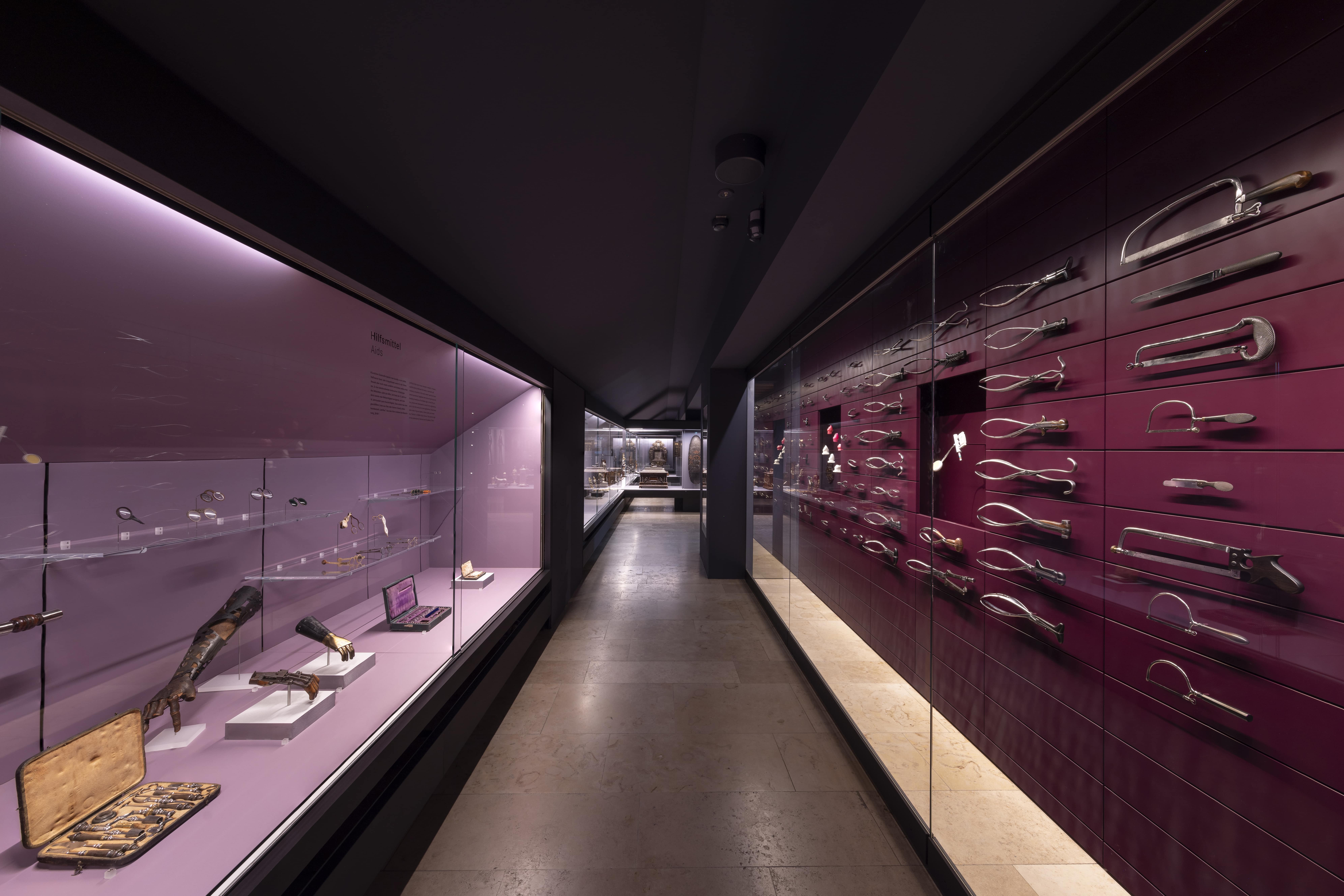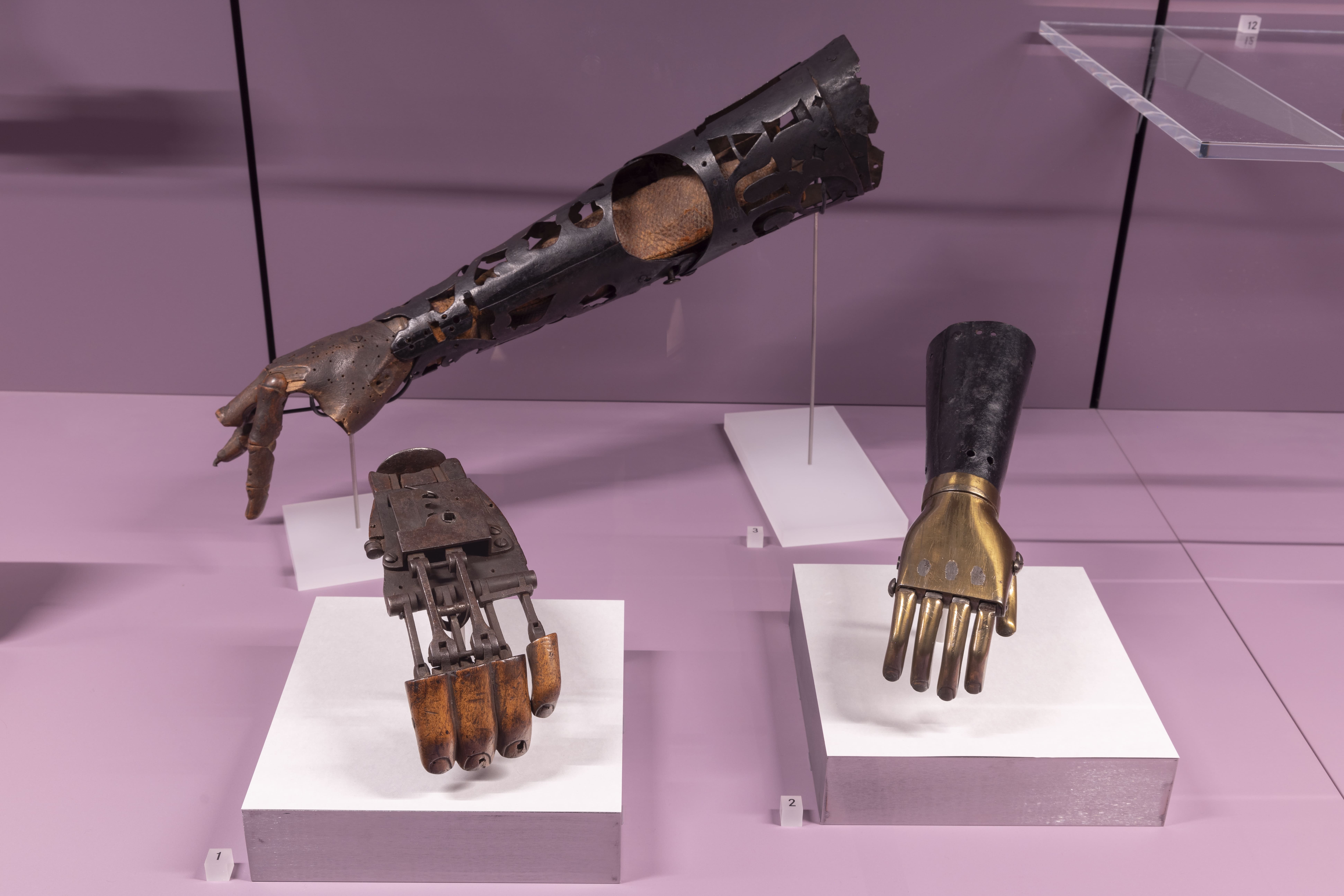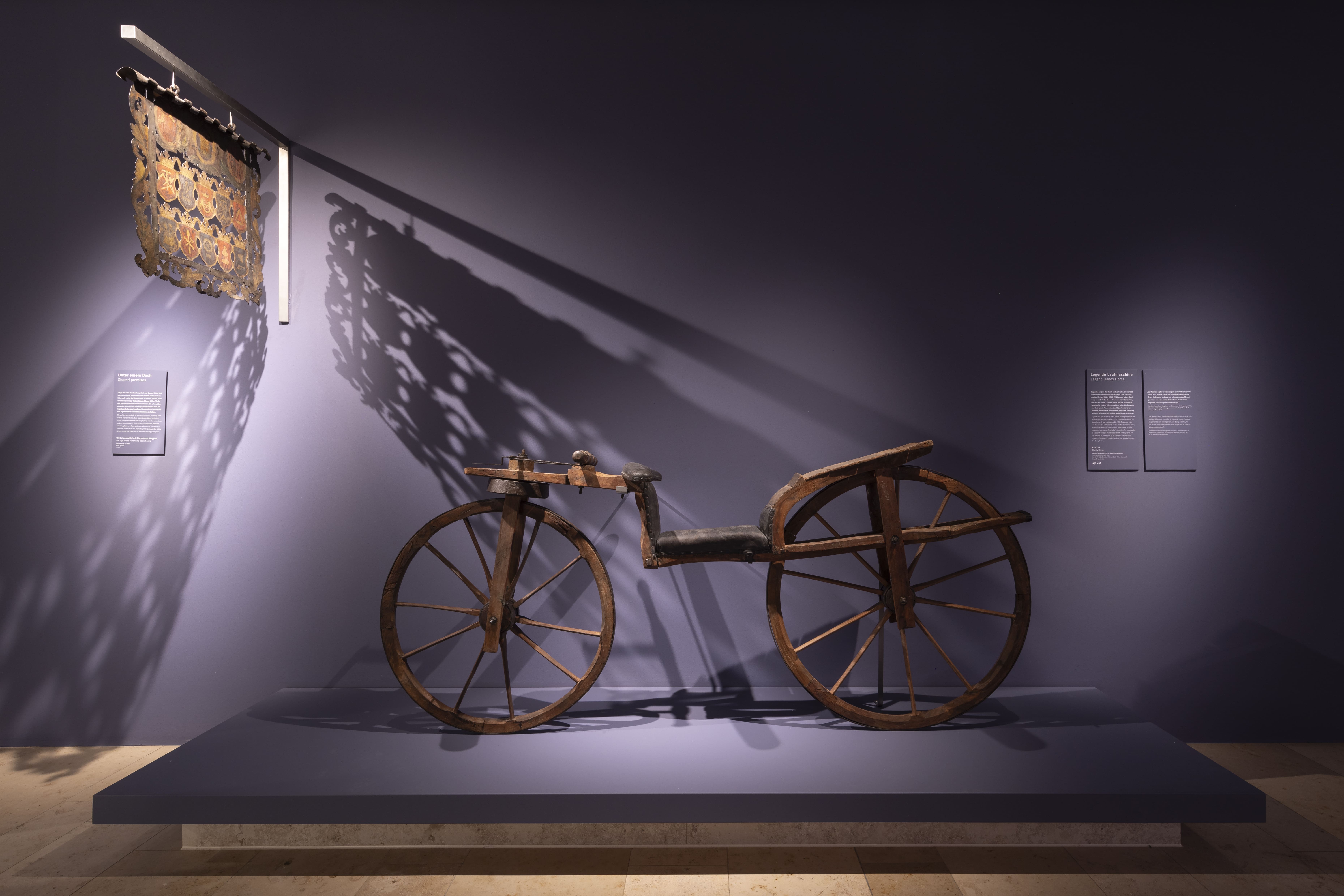The Crafts and Medicine
The Germanische Nationalmuseum possesses an internationally significant collection of historical objects from the trades and medicine dating from the early 16th to the late 19th century.
What do the trades and medicine have in common?
The new exhibition of the collection offers insights into the similarities and differences between these two fields in terms of forgotten traditions and practices.
While the trade guilds shaped people’s daily lives with their mysterious rules and rituals, pharmacy and alchemy were also portrayed as secret sciences. The exhibition traces the development of various professions and shifts in attitudes towards health and work.
Guild and Craft
Throughout the ages people have produced things and altered the world through the work of their hands. Guilds developed in the Middle Ages, which increased the influence of craftsmen within urban life. Knowledge and skill were passed on. At the center of this exhibition are the former treasures of Nuremberg craftsmanship, which include both monumentally sized tools used for show and highly delicate utilitarian tools as well as the masterpieces of stonemasons, jeton makers, and opticians. Portraits adorning the traditional panel paintings owned by guilds provide a look into the mysterious rituals of these sworn societies, whose symbols are still easily recognizable today.
The exhibition spans the golden age of the trades in Nuremberg and beyond. Some of the exhibited items have a legendary status, for example the walking bicycle of Michael Kaßler from Thuringia, perhaps the oldest bicycle in the world, and the “tree” of the Kiel metalworkers.
Medicine und Pharmaceutics
Both medicine and pharmaceutics have their roots in the trades. Their tools and instruments—whether an amputation saw, bullet forceps, or mortar—barely differ from other tools. The exhibition presents the most important medical professions of the early modern era. Not only trained doctors but also bathers and barber surgeons provided medical care. The surgical profession had its origins in the trades before it became an academic discipline. This overview is supplemented by medical aides, such as eyeglasses, which made the lives of people easier. Particularly valuable aspects of the museum’s collection are the interior furnishings of two historical pharmacies from the 17th century including products that still seem strange today, such as pulverized rhinoceros horn.
Looking Ahead
Selected contemporary instruments highlight the question as to how much craft is still a part of medicine today. The portrait of a wandering journeywoman and 3D-printed mass products demonstrate the defining aspects of the crafts today: skill and a drive towards innovation.
Guilds and craft - a digital story

Information and Services
Plan Your Visit
Opening Times
Location and Approach
GNM Museum Shop
FAQ
Library
Branches
Contact










